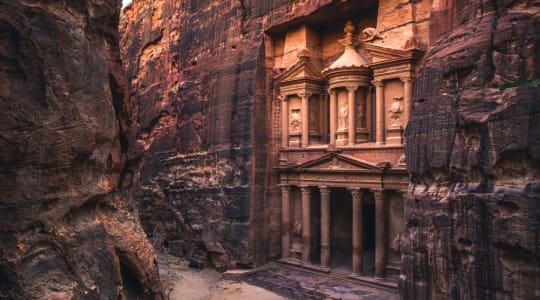
Petra is a historical and archaeological city located in southern Jordan. It is known for its unique rock-cut architecture and stunning natural surroundings. Petra is believed to have been established as early as the 4th century BC, and it later became the capital of the Nabataean Kingdom.
One of the most famous structures in Petra is the Treasury, also known as Al-Khazneh. It is a temple carved into the rock face, with intricate detailing and columns. Other notable structures include the Monastery, the Royal Tombs, and the Amphitheatre.
Petra is also home to a network of tombs, caves, and tunnels, which were used for both burial and as secret passages. The city was a center for trade and commerce, and it served as a vital crossroads for merchants traveling between Arabia, Egypt, and Syria.
Today, Petra is a UNESCO World Heritage Site and attracts millions of visitors each year. In addition to its historical significance, Petra is also known for its stunning natural beauty. The city is surrounded by rugged mountains and rocky terrain, and visitors can explore hiking trails that lead to stunning viewpoints and hidden canyons.
To protect the fragile structures and natural environment of Petra, the Jordanian government has implemented strict conservation measures, including limiting the number of visitors to the site each day. Despite these restrictions, Petra remains one of the most popular tourist destinations in the Middle East and a must-visit for history and nature lovers.
Explore Near Petra
Discover 1 attraction and 1 city within 75km. Perfect for planning day trips, finding connecting flights, or discovering new destinations to explore during your visit.
Nearby Attractions & Places to Visit
1 destination within 74.3km from your location

Nearby Cities Worth Exploring
1 destination within 31.7km from your location
Cross-Border Adventures Near Petra
Discover cross-border adventures near Petra. Explore neighboring countries with similar attractions and extend your travel experience across borders.









